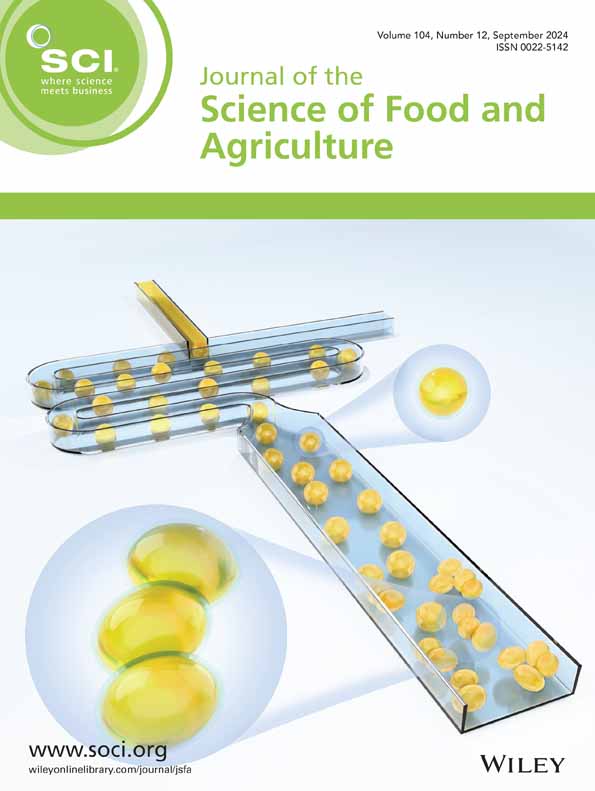Physicochemical properties of wooden breast-extracted myosin and rheological properties of its heat-induced gel
Abstract
BACKGROUND
It is reported that broilers with ‘wooden breast’ have poor processing properties, such as low binding and water-holding capacities. However, the reason for the poor functional characteristics has not been clarified. In this study, myosin was extracted from a wooden breast. Its physicochemical properties were investigated to clarify the relationship between the structure and physicochemical properties of the heating gel of myosin obtained from the wooden breast.
RESULTS
The turbidity of myosin solution extracted from wooden breast increased with increase in the heat treatment to a higher value than that from the normal breast meat myosin. The solubility of myosin collected from a wooden breast after heating decreased like normal breast muscle myosin. The surface hydrophobicity of myosin removed from wooden breast increased continually above 60 °C, unlike the change in surface hydrophobicity of normal breast myosin. The free thiol group of myosin extracted from the wooden breast was higher than normal breast myosin before and after heating. The apparent elasticity of heat-induced gels and chicken meat sausages was significantly lower in sausages and gel with wooden breast than normal ones (P < 0.05). The microstructure of the heated gel of normal myosin showed a fine network structure. In contrast, the heat-induced gel of wooden breast-extracted myosin showed a structure with loosely connected aggregates and many gaps.
CONCLUSION
The coarseness of the internal gel structure of myosin extracted from wooden breast was shown to affect the apparent elasticity of the gel and sausages made from the chicken meat. © 2023 Society of Chemical Industry.

 求助内容:
求助内容: 应助结果提醒方式:
应助结果提醒方式:


